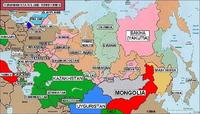TURANIAN Society Party
TURANIAN STATES AND TERRITORIES
Turanian Society (Turkish: Turan cemiyeti, Tatar: Turan cämğiäte, Hungarian: Turáni Társaság), a society founded in 1839 by Tatars, aiming at uniting the various Turkic peoples of the Russian empire.
The name is derived from Turan, an ancient Persian name for the land to the East of Iran where many Turkic folks live, and Turan, the goal of an all Turks uniting state.
The organisation is one of the earliest forerunners for modern Pan-Turkism and Turanism.
During the latter part of the 19th century and the early 20th century similar societies were founded in many other countries with claimed Turanian roots:
Hungarian Turanian Society, Hungary, founded 1910, a conservative and highly secretive Turanianist group inspired by János Sajnovics. It printed the Turan magazine, with frequent articles on Japan, sent a cultural mission to Japan in 1922 and supporting greater links between the Hungarian Royal Household and the Japanese Imperial Family;
Turanian Alliance of Hungary founded 1920;
Turanian National Alliance or Alliance of Turanian People ("Turan Minzoku Domei"), founded in Japan in 1921
Japanese Turanian Society early 1930s; and
In 1914, in the context of World War I, a Yenl Turan (New Turanian Society) was formed in Constantinople and supported by both Bolsheviks and the German Empire. This project had a strong Islamist agenda and aimed also at non-Turanian Muslims of Central Asia.
The Altaic hypothesis, as originally proposed by Matthias Castrén in 1844, included Finno-Ugric, Samoyedic, Turkic, Mongolic, and Tungusic. Subsequently, Turkic, Mongolic, and Tungusic were grouped together, on account of their especially similar features, while Finno-Ugric and Samoyedic were grouped as Uralic. Two contrasting language families were thereby formed, but the similarities between them led to their retention in a common grouping, named Ural-Altaic.
The Ural-Altaic family was widely accepted by linguists who studied Uralic and Altaic until well into the 20th century. More recently, they have almost universally rejected it, although for very different reasons. (See below, "Relationship between Uralic and Altaic".)









